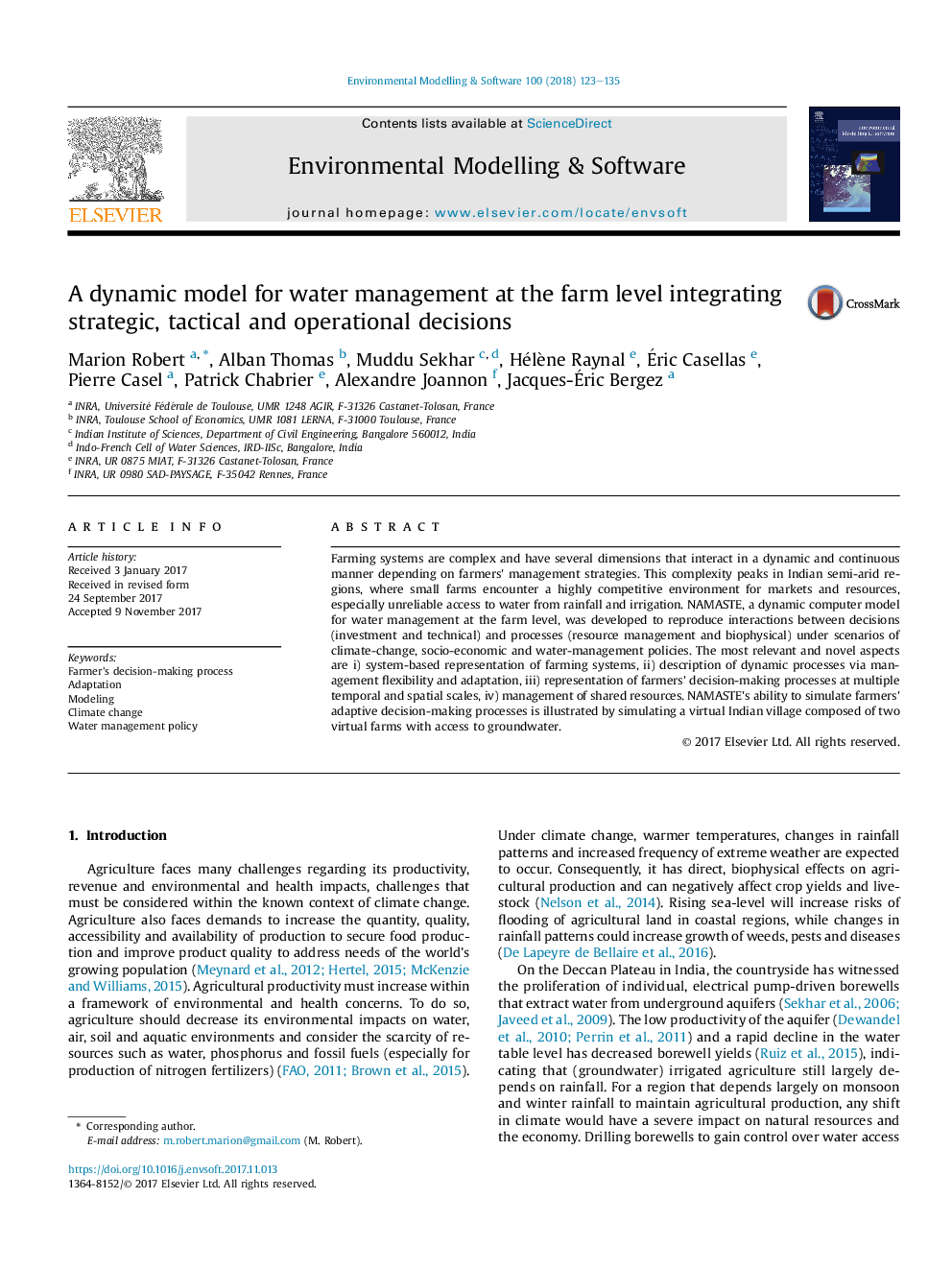| Article ID | Journal | Published Year | Pages | File Type |
|---|---|---|---|---|
| 6962240 | Environmental Modelling & Software | 2018 | 13 Pages |
Abstract
Farming systems are complex and have several dimensions that interact in a dynamic and continuous manner depending on farmers' management strategies. This complexity peaks in Indian semi-arid regions, where small farms encounter a highly competitive environment for markets and resources, especially unreliable access to water from rainfall and irrigation. NAMASTE, a dynamic computer model for water management at the farm level, was developed to reproduce interactions between decisions (investment and technical) and processes (resource management and biophysical) under scenarios of climate-change, socio-economic and water-management policies. The most relevant and novel aspects are i) system-based representation of farming systems, ii) description of dynamic processes via management flexibility and adaptation, iii) representation of farmers' decision-making processes at multiple temporal and spatial scales, iv) management of shared resources. NAMASTE's ability to simulate farmers' adaptive decision-making processes is illustrated by simulating a virtual Indian village composed of two virtual farms with access to groundwater.
Related Topics
Physical Sciences and Engineering
Computer Science
Software
Authors
Marion Robert, Alban Thomas, Muddu Sekhar, Hélène Raynal, Ãric Casellas, Pierre Casel, Patrick Chabrier, Alexandre Joannon, Jacques-Ãric Bergez,
